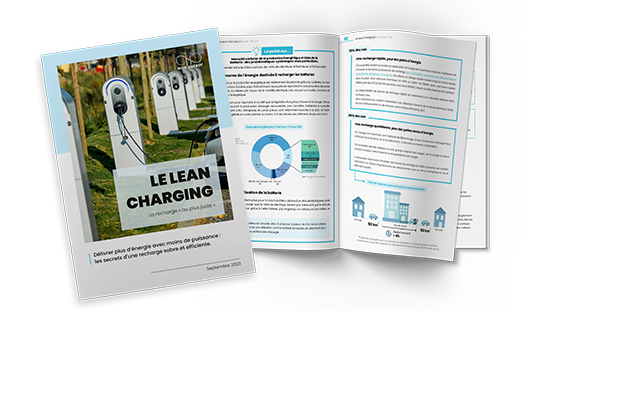Lean Charging: delivering more energy with less power
Road transport accounts for around 30% of greenhouse gas emissions, and electric mobility is emerging as one of the most effective solutions for significantly reducing these emissions. Electric vehicles (EVs) and plug-in hybrids (PHVs) are gaining in popularity, accounting for almost 20% of new registrations.
However, to adopt an electric vehicle, it needs to be recharged. Day-to-day recharging in car parks is therefore a prerequisite for the mass adoption of EVs. This applies to all car parks, and in the vast majority of cases, the electric vehicle will remain parked for longer than the time needed to deliver the dose of energy it requires.
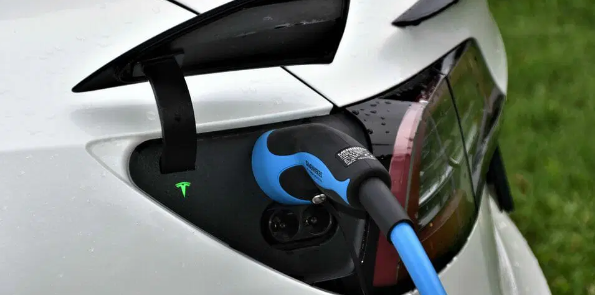
This poses a major challenge: how can these vehicles be recharged as efficiently and cost-effectively as possible?
Faced with the growing demand for recharging electric vehicles, a number of solutions have been proposed to ensure efficient use of energy. These include ” Smart Charging “, ” Pilot Charging ” and the ” Vehicle-to-Grid ” (V2G) concept.
These solutions offer promising prospects for the transition to more sustainable mobility. However, their implementation remains subject to major challenges, such as the availability of power and the investment required in civil and electrical engineering works.
A new form of Lean Charging offers an opportunity to accelerate the deployment of the infrastructure needed for electric mobility, by making charging more efficient and less resource-intensive.
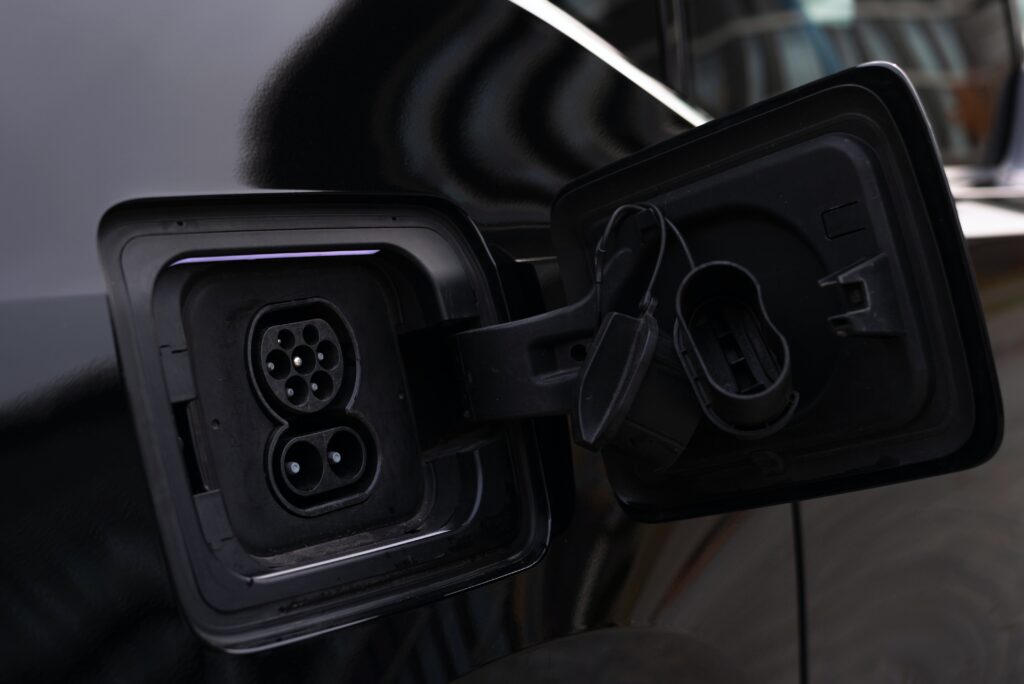
Lean Charging: the principles of Lean Manufacturing applied to the recharging of electric vehicles
Lean Manufacturing is an industrial management approach popularised by Toyota in the 1950s. This method aims to optimise production by eliminating waste, improving product quality and maximising the efficiency of the resources employed. The concept is based on several fundamental principles:
- Elimination of waste: This involves eliminating all stages, activities or resources that do not add value for the customer. By reducing waste, companies can optimise their production processes, reduce lead times, increase overall customer satisfaction and boost revenues. This approach focuses on the efficiency and relevance of each stage of the production process, ensuring that every action contributes to creating value for the end customer.
- Continuous improvement: This philosophy encourages companies to constantly look for ways to improve their processes and products. By regularly monitoring and analysing performance, teams can identify areas for optimisation and make adjustments to improve quality and overall production efficiency.
- Knowledge creation: This involves gathering and sharing knowledge about best practices, improvement techniques and innovations within the organisation. By sharing knowledge with all teams, companies can strengthen their collective know-how and accelerate the continuous improvement process.
- Quality improvement: Aims to maintain the same quality, or even improve it constantly, by looking for ways to eradicate defects and errors in the final products. By improving quality, companies can increase customer satisfaction, strengthen their reputation and reduce the costs associated with returns and complaints.
Lean Manufacturing is a powerful approach that has transformed many companies in the manufacturing sector. However, its fundamental principles can also be extended to other areas, including electric mobility with the emerging concept of ‘Lean Charging‘.
By applying Lean principles to the recharging of electric vehicles, it is possible toeliminate power wastage, continuously optimise recharging processes and maximise the use of available resources, thereby contributing to more sustainable and efficient electric mobility, to the great satisfaction of operators and users alike.
The challenges of electric recharging
To encourage and facilitate the transition to electric mobility, one obvious answer would be to install as many charging points as electric vehicles, or even parking spaces. However, recharging infrastructures come up against a number of difficulties, such as the power allocation required, the under-utilisation of this power, the costs involved in installing and maintaining them, and their lack of scalability.
These issues highlight the need to adopt an innovative approach tailored to each use case.
Under-used charging points and blocked power
Electric vehicles only need a few kWh for their daily charge, a dose of energy that will be delivered relatively quickly, even with a standard charging point. However, these vehicles will remain parked, and therefore plugged in, for longer, leading to a monopolisation of charging points.
The consequence is twofold. On the one hand, the unavailability of the charging point for other users gives rise to the idea that even more charging points should be added. Secondly, the power allocated to the charging infrastructure is oversized and underused, even though this allocation generates significant costs.
Costly work and lead times
The cost of installing charging points is high, and can be a major obstacle to their widespread deployment. In fact, the civil and electrical engineering required to install and connect these chargepoints to the electricity grid accounts for most of the total investment in IRVE.
Apart from the cost, the roadworks can sometimes be an obstacle in themselves, with landlords sometimes prohibiting earthworks in car parks. Depending on the power available on the car park’s electrical infrastructure, adaptations may have to be made to the building, or even to the electricity network manager. These adaptations can considerably extend the implementation time.
Lack of scalability
The electrification of the vehicle fleet and company fleets is a gradual process. The need for charging points and the power allocated to them will therefore grow at the same rate. But given the work required to add new charging points, they are being installed in waves. Two rates that are difficult to reconcile.
What’s more, if there is enough power available today to install the charging points needed for the current electric vehicle fleet, will there be enough later, when the need for recharging increases tenfold? Will it then be necessary to carry out considerable new work to adapt to this development?
To avoid such inconveniences and ensure a smooth transition, it is essential to take these prospects into account now and opt for charging solutions that offer flexibility and scalability. This will minimise future costs and the disruption caused by construction work, while encouraging faster, more efficient adoption of electric mobility.
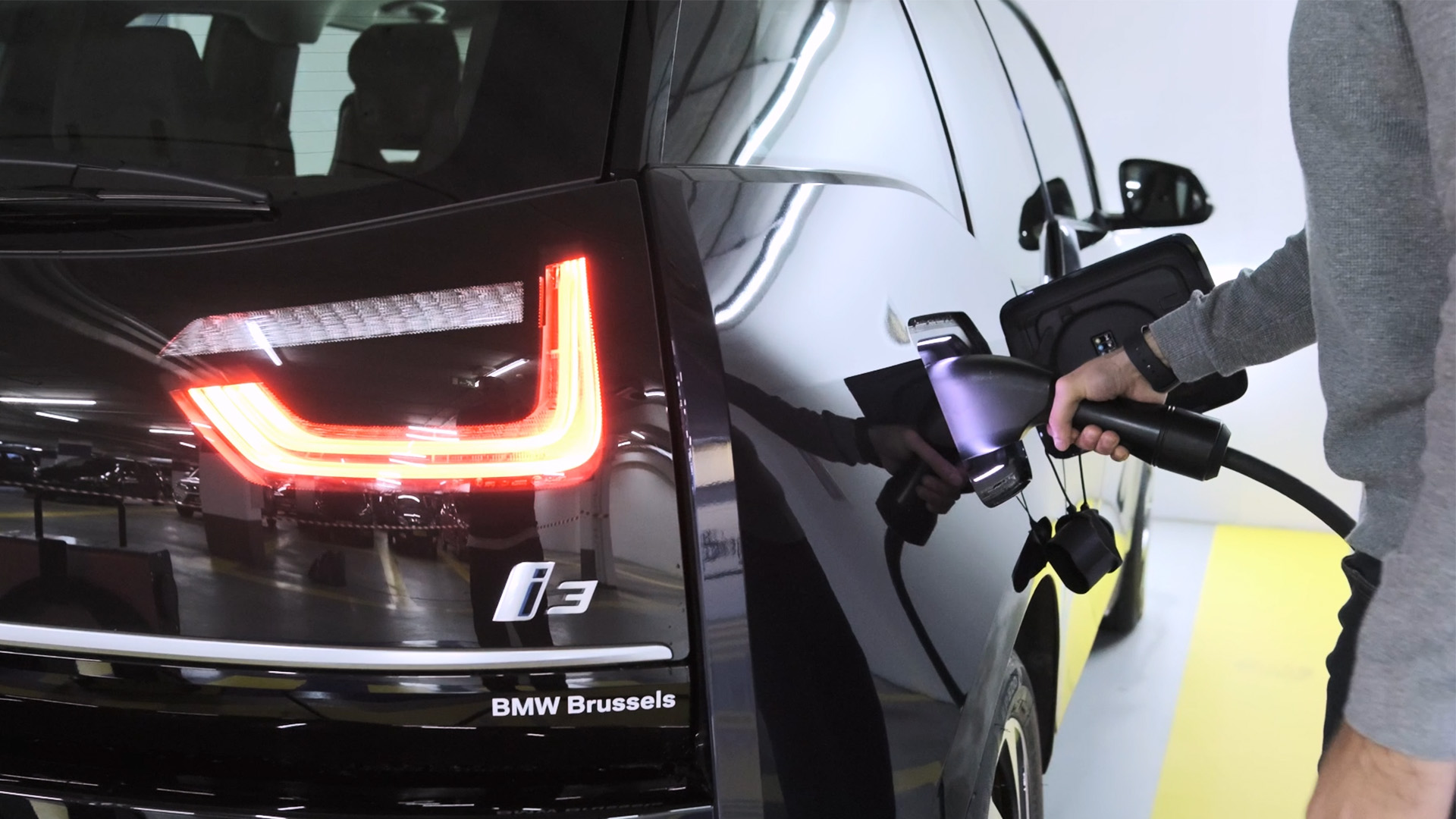
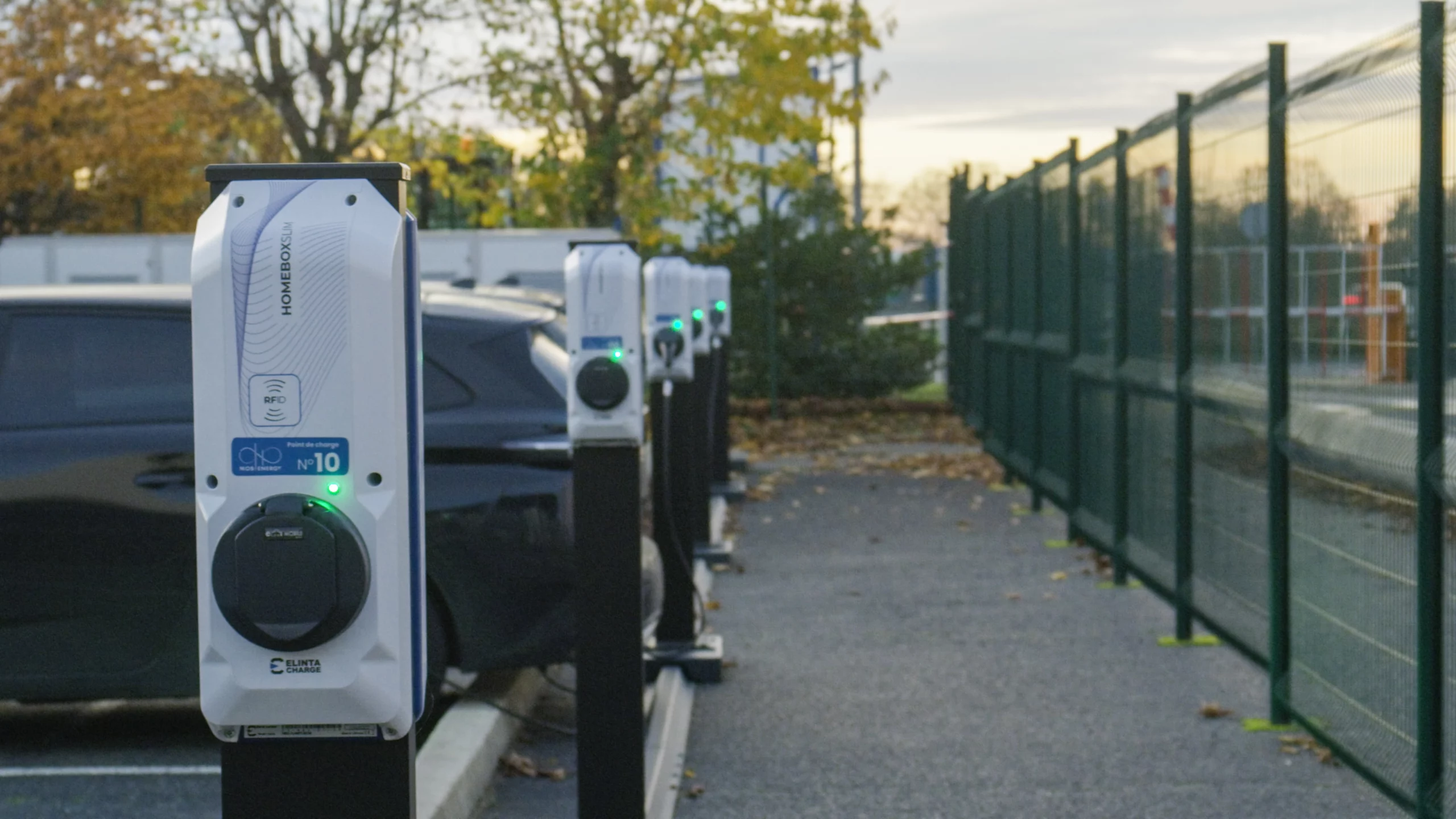
Existing but limited solutions
A number of solutions have been proposed to optimise the charging of electric vehicles. These innovative solutions pave the way for the efficient deployment of electric mobility on a large scale.
Smart Charging – Intelligent charging
Smart Charging is one of the leading solutions. Using advanced technologies, this approach enables electric vehicles to communicate with the charging infrastructure. In this way, EVs can adjust their charging speed in real time according to the availability of the network. This intelligent optimisation avoids peaks in demand, balances the load on the network and contributes to its overall stability. What’s more, Smart Charging takes into account user preferences in terms of charging time (slow or fast) or even charging time (day/night), while minimising the associated energy costs.
Controlled recharging – Rational use of resources
Controlled recharging makes it possible to regulate the power allocated to a recharging station according to specific criteria, such as the availability of energy from renewable sources, the level of energy demand on the electricity network, or the electricity tariff.
By making real-time adjustments to the power allocated by the charging station, this energy management system aims to maximise the use of energy and ensure better regulation of the network’s load.
Vehicle-to-Grid (V2G) – Electric vehicles as Grid Actors
Vehicle-to-Grid (V2G) offers considerable potential, transforming EVs into real players in the electricity grid. As well as recharging from the grid, V2G-connected vehicles can also inject electricity into the grid when it is needed. For example, during peak periods, when demand for electricity is high, EVs in V2G mode can supply energy to relieve the grid, helping to balance supply and demand.
Current limitations of recharging solutions
Although these innovations are promising for optimising charging infrastructures for electric vehicles, they still have certain limitations that it is important to bear in mind.
- Major investment and works: Implementing recharging solutions nevertheless requires major investment and works. The power allocated may be limited, but virtually all the civil and electrical engineering will have to be carried out.
- A degraded service: for users, the service is illegible and blind. The power will also be shared between all the cars connected, making it impossible for cars that are only connected for an hour to obtain the desired amount of energy. What’s more, users will not be warned of variations in the power available for their own recharging.
- Communication and standardisation: For Smart Charging to provide optimum management of recharging, it is essential to have seamless communication between vehicles and recharging infrastructures. However, standardising communication protocols between different types of vehicle and charging operators remains a challenge.
- Scalability: Given the rapid development of electric mobility, it is essential to design charging infrastructures that are scalable, capable of meeting future needs in terms of power and number of charging points. This scalability should be taken into account right from the design stage.
Lean Charging: recharging as efficiently as possible
Intelligent recharge management
Lean Charging is an approach to charging that aims to avoid under-utilisation of charging points and optimise the use of electrical power. By improving the charging processes, the charging points are able to deliver maximum energy using the least amount of power possible. To achieve this, users can enter their specific requirements in terms of kWh to be recovered and parking time.
Anadvanced scheduling system then takes charge of establishing a recharging order, guaranteeing that each customer’s order will be met. This organised power-sharing process enables the most urgent orders to be prioritised, by allocating more power to them, while smaller orders can benefit from reduced power.
Thanks to this ingenious approach, a maximum number of vehicles can be recharged with significantly less total allocated power than with traditional solutions. This intelligent, optimised management of electrical resources ensures that the recharging process is more effective, andincreases the efficiency of the resources employed.
Reduced installation costs and times
Integrating storage batteries into the charging solution offers a key advantage: a buffer between the grid and the Electric Vehicle Charging Infrastructure (IRVE). This integration allows the charging solution to operate with reduced input power, taking advantage of the energy stored in the batteries and the power conversion at the output. What’s more, a low-power connection means less work, lower costs and shorter lead times.
Flexibility and scalability
The Lean Charging concept offers significant advantages in terms of flexibility and scalability for charging infrastructures. By integrating interconnected charging points and opting for above-ground installations, it avoids the need for major works when installing new charging points. This approach offers rapid and seamless scalability, since the chargepoints are interconnected rather than being individually linked to the network by cables.
To meet ever-growing demand, Lean Charging can also incorporate additional functionalities. For example, it can integrate photovoltaic (PV) panels to take advantage of cheaper, green electricity, as well as re-injection capabilities into the grid to balance fluctuations in electricity demand. In this way, the system can dynamically adapt to energy needs, promoting a sustainable and efficient approach to recharging electric vehicles.
Continuous improvement and performance monitoring
By applying the Lean principle of continuous improvement, recharge managers can regularly monitor and analyse system performance. This allows them to identify potential sources of optimisation, make adjustments and maximise the efficiency of available resources.
By integrating Lean Charging solutions, charging infrastructures for electric vehicles become more efficient, scalable and cost-effective. These advances are helping to promote sustainable electric mobility, offering practical, affordable and environmentally-friendly solutions for vehicle fleets and electric car users.
Lean charging with Mob-Energy
Lean charging, as proposed by Mob-Energy, is an innovative approach to recharging infrastructure for electric mobility. Our ambition is to develop this new approach to recharging, a recharging that is as lean as possible, integrating circularity and scalability.
Find out more about the Lean Charging concept and our vision of lean charging:
Our aim: to speed up the transition to electric mobility by enabling public and company car park managers to install charging infrastructure in the most efficient way possible. Recharging that is easy to install, has little impact on the electricity grid and takes into account the specific needs of users to ensure quality of service.
Mob-Energy has developed two innovative recharging solutions to meet the new challenges of electric mobility:
Charles, the autonomous loader robot
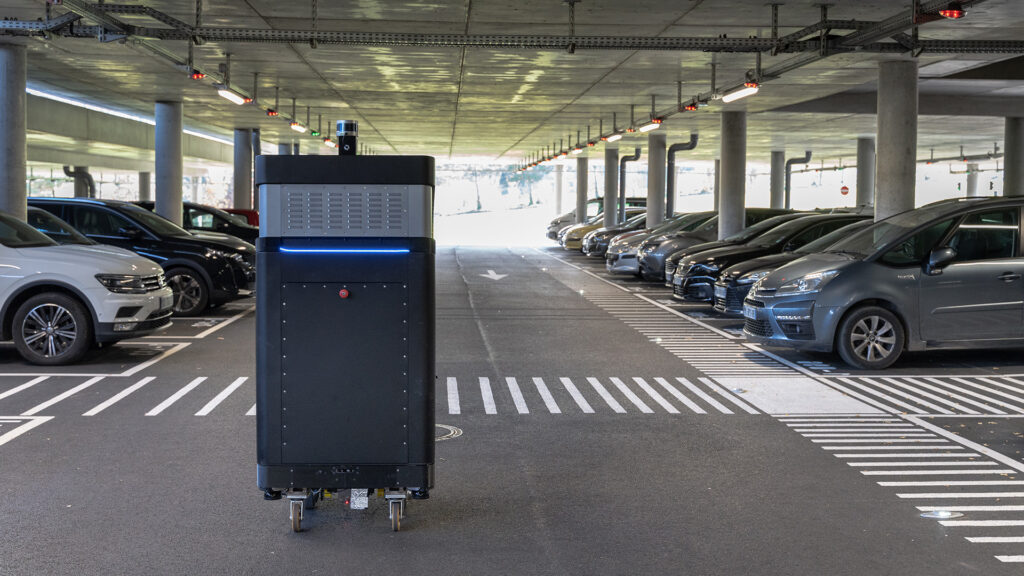
This system offers mobile recharging, eliminating the need for dedicated recharging points and ensuring that vehicles are never monopolised. The charging robot travels to the vehicles and recharges them where they are parked.
A solution perfectly suited to medium- to long-term parking, such as certain public car parks, airports, car storage depots, etc.
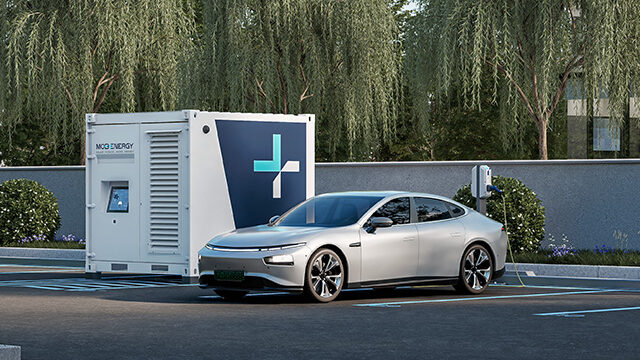
This energy storage and recharging system requires a single connection to the grid, equivalent to the power of a single conventional charging point (10 kVA), and distributes the energy to a network of 20 interconnected, above-ground charge points.
Recharging speed is optimised thanks to a scheduling system that prioritises recharging according to parking time and the amount of energy required.
Mob-Energy invites you to explore ways of intensifying the use of resources available for recharging. The challenge: to meet the challenges posed by a power shortage that is under-utilized and costly to install.
Feel free to download our new white paper!
